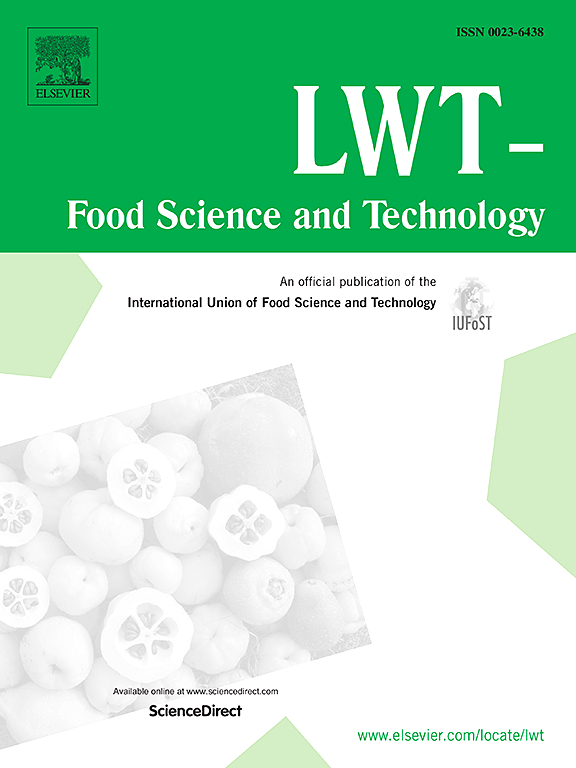Impact of Lactobacillus plantarum fermentation on jujube juice: Insights from intelligent sensory evaluation, tolerance index, and acidogenic potential
IF 6
1区 农林科学
Q1 FOOD SCIENCE & TECHNOLOGY
引用次数: 0
Abstract
The selection of strains is very important to the odor, taste and nutrition of lactic acid fermentation products. In this study, 108 strains of L. plantarum selected by the laboratory were used to ferment jujube juice, and a large sample experiments was used to reveal the effects of L. plantarum on the sensory quality of fermented jujube juice. Among them, the color mainly affects the brightness and yellow-blue color of jujube juice, odor mainly affects the content of methane, ethanol, nitrogen oxides, and sulfides, and taste mainly affects the basic texture of jujube juice. LP44 strain was screened by multivariate statistical analysis of tolerance, acid production and sensory quality. The API 50CH reagent strip was used to analyze the carbon source spectrum of LP44. It was found that LP44 cannot utilize five-carbon sugars such as xylose and ribose, but it can utilize 22 common carbon sources, especially fructose and glucose, which are plentiful in jujube. Therefore, LP44 strain is very suitable for fermentation of jujube juice, and the fermented jujube juice is bright yellow in color, abundant in aromatic compounds, with strong jujube odor, and prominent sourness and umami. Finally, we named LP44 as LP-CWC-Zao for subsequent studies.
求助全文
约1分钟内获得全文
求助全文
来源期刊

LWT - Food Science and Technology
工程技术-食品科技
CiteScore
11.80
自引率
6.70%
发文量
1724
审稿时长
65 days
期刊介绍:
LWT - Food Science and Technology is an international journal that publishes innovative papers in the fields of food chemistry, biochemistry, microbiology, technology and nutrition. The work described should be innovative either in the approach or in the methods used. The significance of the results either for the science community or for the food industry must also be specified. Contributions written in English are welcomed in the form of review articles, short reviews, research papers, and research notes. Papers featuring animal trials and cell cultures are outside the scope of the journal and will not be considered for publication.
 求助内容:
求助内容: 应助结果提醒方式:
应助结果提醒方式:


